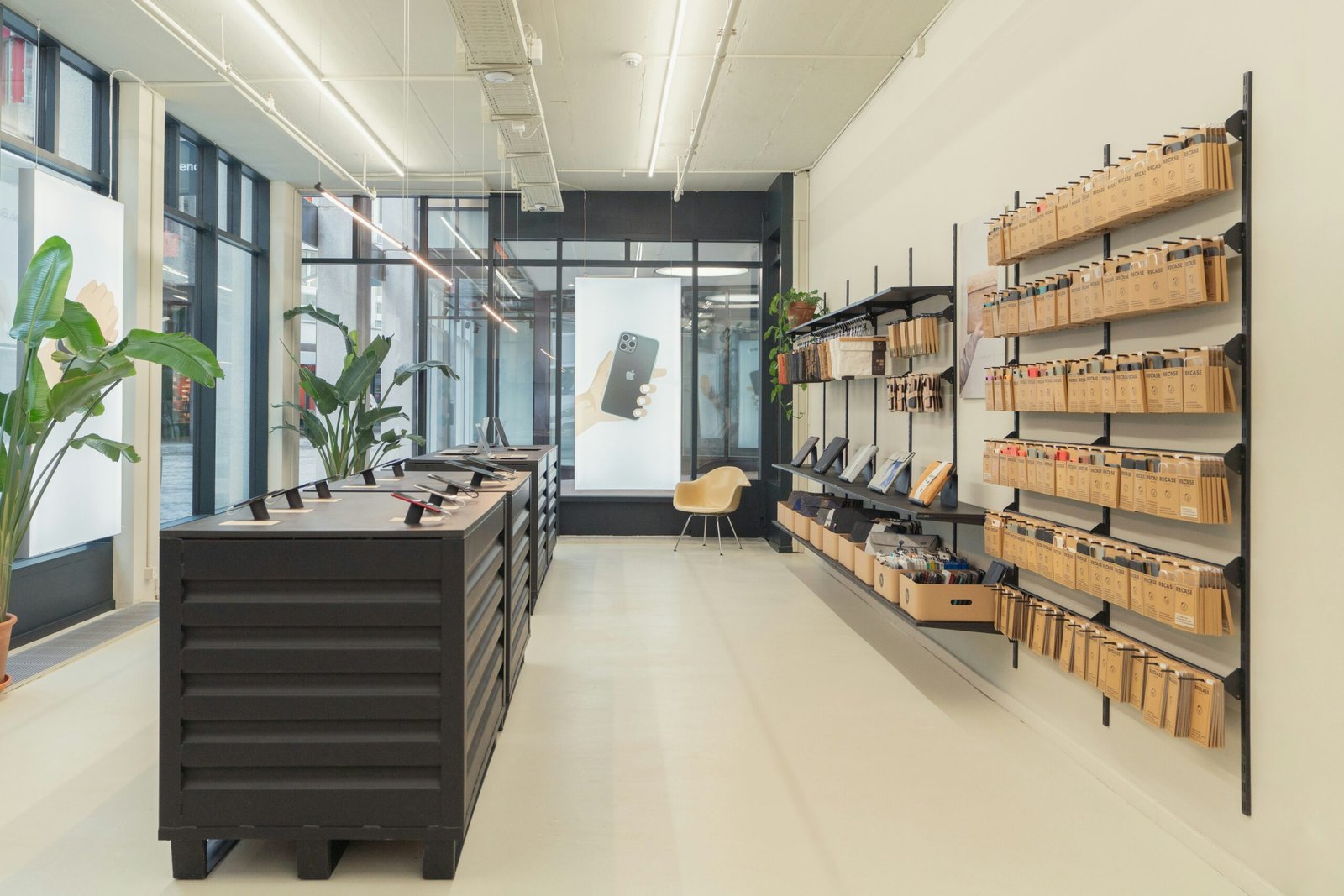Introduction to AI-Driven Design in Commercial Spaces
AI-driven design represents a significant evolution in the architectural and interior design fields, particularly within commercial environments. Leveraging the capabilities of artificial intelligence, designers can now create more functional, aesthetically appealing, and user-centered spaces. The integration of AI tools in the design process enhances the ability of architects to optimize layouts, conduct predictive analyses, and improve the overall user experience.
The advancements in technology have democratized access to powerful AI tools, enabling designers to utilize data-driven insights during the creative process. These tools facilitate the analysis of various factors, such as foot traffic, lighting, and acoustics, which can influence how a space is utilized. By processing vast amounts of data, AI algorithms can suggest optimal configurations, ensuring that every square foot of a commercial space is utilized effectively.
Space optimization is one of the primary applications of AI in commercial design. With the ability to analyze data patterns, AI can help designers anticipate needs and adjust layouts accordingly. For instance, retail spaces can be configured to enhance customer flow and engagement, while office environments can adapt to the changing requirements of a dynamic workforce. Furthermore, AI-driven tools can assist in predicting trends, enabling designers to stay ahead of the curve in terms of functionality and aesthetics.
The importance of integrating artificial intelligence into the design process goes beyond mere efficiency; it also encompasses creating environments that resonate with users. By focusing on aspects such as comfort, accessibility, and interaction, AI-driven design offers a more holistic approach. This results in spaces that not only meet functional requirements but also enhance the experience of those who inhabit them, thus transforming the landscape of commercial spaces in profound ways.
Key Benefits of AI-Driven Design in Commercial Environments
AI-driven design has emerged as a transformative force within the realm of commercial spaces, offering a multitude of benefits that enhance both the efficiency of the design process and the overall functionality of the environment. One significant advantage is the capability for enhanced efficiency in the design workflow. AI algorithms can rapidly analyze vast datasets, enabling designers to identify trends, preferences, and constraints, which accelerates decision-making and diminishes the time needed for project completion.
Data-driven decision-making also stands out as a critical benefit of AI-driven design. By leveraging big data, design teams can create spaces based on empirical evidence rather than intuition alone. This approach not only leads to more informed design choices but also plays a vital role in optimizing the functionality of commercial spaces, ensuring they meet the evolving needs of the businesses they serve.
Customization options are another pivotal benefit that AI-driven design offers. Commercial spaces often require tailored solutions based on specific operational needs, target demographics, and branding strategies. AI tools can facilitate this customization by generating design variations and simulating how different arrangements will operate under varied conditions, allowing businesses to select designs that truly align with their goals.
Sustainability has become a crucial consideration in design, and AI-driven solutions excel here as well. By utilizing energy-efficient modeling and predictive analytics, designers can create environments that not only reduce energy consumption but also minimize the carbon footprint of commercial operations. AI systems can forecast energy use patterns and suggest modifications, enabling better resource management.
Lastly, the adaptability of AI-driven design is a notable benefit for commercial environments. As businesses grow and evolve, their spatial needs may change. AI tools can help design flexible spaces that can be easily reconfigured to suit shifting requirements. Through real-world examples and case studies, it becomes evident that these benefits enhance the overall functionality and serviceability of commercial spaces, positioning AI-driven design as a critical component in modern architectural strategies.
Challenges and Considerations in Implementing AI in Design
Integrating artificial intelligence (AI) into the design process of commercial spaces presents several challenges and considerations that organizations must carefully navigate. One of the primary hurdles is the necessity for high-quality data. AI systems rely heavily on vast amounts of accurate and relevant data to function effectively. Without sufficient data, the AI’s ability to generate meaningful insights and recommendations can be severely hampered. Organizations must invest time and resources to collect, clean, and maintain the quality of their data, which can be a daunting task for many.
Another significant concern relates to the implications of AI on traditional employment roles within the design field. As AI systems become increasingly capable of performing tasks traditionally executed by human designers, there is a growing apprehension regarding job displacement. While AI can augment the capabilities of designers by streamlining processes and generating innovative ideas, organizations must strike a delicate balance between leveraging technology and preserving the invaluable creative input that human designers provide. Fostering a collaborative environment where AI technology assists rather than replaces human ingenuity is essential for a successful transition.
Ethical considerations also play a vital role in the implementation of AI in architecture and design. The concentration of power in AI systems poses questions about bias, accountability, and transparency in the design decision-making process. Organizations should prioritize ethical standards and ensure that AI applications operate transparently, reflecting diverse perspectives to prevent marginalization or inequality in design outcomes. To address these challenges, businesses can focus on fostering a culture of continuous learning, encouraging interdisciplinary collaboration, and actively engaging stakeholders in discussions about the responsible use of AI in design.
The Future of AI-Driven Design in Commercial Spaces
The integration of artificial intelligence into the design of commercial spaces is poised to enhance both efficiency and creativity in unprecedented ways. As technology continues to advance, predictions indicate that AI-driven design will be instrumental in restructuring the methodology of spatial planning and aesthetic innovation. With increasing reliance on data analytics, AI systems will enable designers to make informed decisions based on quantitative insights into consumer behavior, preferences, and emerging trends.
One of the more significant advancements expected in AI-driven design is the ability to adapt in real-time. Sensors and IoT devices can gather information about how occupants interact with spaces, allowing for continuous adjustments that improve comfort, productivity, and energy efficiency. This dynamic adaptability will foster environments that not only meet current needs but also anticipate future ones, creating a proactive approach to design that is in harmony with changing user demands and environmental standards.
Furthermore, the aesthetic component of commercial spaces will benefit from AI-driven platforms that can generate innovative design concepts, enabling a more expansive range of creative possibilities. By leveraging machine learning algorithms trained on vast collections of visual data, designers can explore unique themes and styles that resonate with various demographic groups. This emergent capability can lead to more personalized and engaging built environments that foster stronger connections between the space and its users.
In conclusion, the future of AI-driven design in commercial spaces holds remarkable potential for transforming the way built environments function and engage with individuals. As AI technology continues to advance, it will undoubtedly redefine traditional design paradigms, resulting in spaces that are not only aesthetically pleasing but also tailored to meet the evolving expectations of their occupants. The symbiotic relationship between AI, design, and human experience will be crucial in shaping the next generation of commercial environments.









